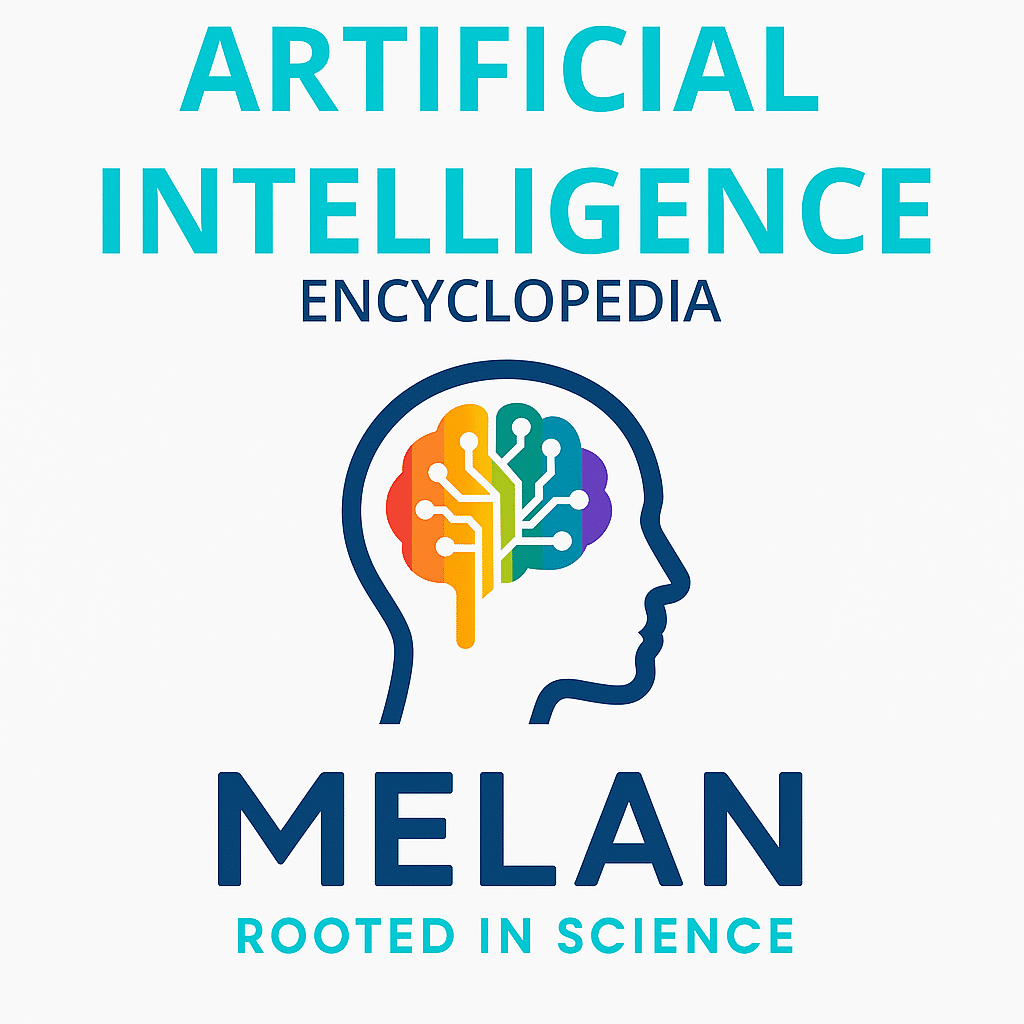Neural Network refers to a computational model inspired by the structure and function of biological neural networks in the brain, consisting of interconnected nodes (artificial neurons) organized in layers that process information by adjusting connection weights to learn patterns from data. These systems form the foundation of modern deep learning and artificial intelligence, enabling computers to recognize images, understand language, make predictions, and solve complex problems by mimicking the way biological neurons transmit and process signals through weighted connections and activation functions.
Neural Network
|
|
|---|---|
| Category | Artificial Intelligence, Machine Learning |
| Subfield | Deep Learning, Computational Neuroscience, Pattern Recognition |
| Key Components | Neurons, Weights, Activation Functions, Layers |
| Learning Method | Backpropagation, Gradient Descent, Error Correction |
| Primary Applications | Image Recognition, Natural Language Processing, Predictive Modeling |
| Sources: Nature Deep Learning Review, Deep Learning Textbook, IEEE Neural Networks | |
Other Names
Artificial Neural Network (ANN), Deep Neural Network (DNN), Connectionist Model, Parallel Distributed Processing, Multi-Layer Perceptron, Neural Computing, Neuromorphic Computing
History and Development
Neural networks originated in the 1940s with Warren McCulloch and Walter Pitts’ mathematical model of artificial neurons, followed by Frank Rosenblatt’s development of the perceptron in 1957 at Cornell University, which demonstrated how simple neural networks could learn to classify patterns. The field experienced setbacks in the 1970s when Marvin Minsky and Seymour Papert showed the limitations of single-layer perceptrons, leading to reduced interest and funding.
Revival came in the 1980s with the development of backpropagation by Geoffrey Hinton, David Rumelhart, and Ronald Williams, enabling training of multi-layer networks that could solve complex problems. The modern deep learning revolution began in the 2000s when researchers like Geoffrey Hinton, Yann LeCun, and Yoshua Bengio developed techniques for training very deep networks, culminating in breakthrough applications like AlexNet in 2012 that dramatically improved image recognition and sparked widespread adoption of neural networks across industries.
How Neural Networks Work
Neural networks process information through layers of artificial neurons that receive inputs, apply mathematical transformations, and pass results to subsequent layers until producing final outputs. Each artificial neuron computes a weighted sum of its inputs, applies an activation function to introduce nonlinearity, and transmits the result to connected neurons in the next layer. During training, the network adjusts connection weights using algorithms like backpropagation, which calculates how much each weight contributed to output errors and updates them to minimize mistakes.
The learning process involves feeding the network many examples with known correct answers, allowing it to gradually improve its ability to recognize patterns and make accurate predictions. Deep neural networks with many hidden layers can learn hierarchical representations, with early layers detecting simple features like edges in images and deeper layers combining these features into complex concepts like objects and scenes.
Variations of Neural Networks
Feedforward Neural Networks
Basic architecture where information flows in one direction from input to output layers, commonly used for classification and regression tasks where the relationship between inputs and outputs is relatively straightforward.
Convolutional Neural Networks (CNNs)
Specialized networks designed for processing grid-like data such as images, using convolutional layers that detect local features and pooling layers that reduce dimensionality while preserving important information.
Recurrent Neural Networks (RNNs)
Networks with memory capabilities that can process sequential data by maintaining internal states, enabling applications in natural language processing, time series analysis, and any task involving temporal patterns.
Real-World Applications
Neural networks power image recognition systems that enable photo tagging on social media, medical diagnosis from radiological scans, and autonomous vehicle perception systems that identify pedestrians, vehicles, and road signs in real-time. Natural language processing applications include machine translation services like Google Translate, chatbots and virtual assistants, and content recommendation systems that understand user preferences through sophisticated language analysis.
Healthcare systems use neural networks for drug discovery, personalized treatment recommendations, and early disease detection by analyzing patterns in medical data that human experts might miss. Financial institutions employ neural networks for fraud detection, algorithmic trading, and credit risk assessment by processing vast amounts of transaction data and market information. Marketing and advertising platforms leverage neural networks to optimize ad targeting, predict customer behavior, and personalize content delivery through advanced pattern recognition in consumer data.
Neural Network Benefits
Neural networks excel at recognizing complex patterns in large datasets that would be impossible for humans to analyze manually, enabling breakthrough performance in tasks like image recognition, speech processing, and game playing. They provide end-to-end learning capabilities that can automatically discover relevant features from raw data without requiring manual feature engineering, reducing the need for domain expertise in data preprocessing. Neural networks are highly flexible and can be adapted to diverse problem types through architectural modifications and training strategies, making them applicable across numerous industries and research domains including preclinical research, nanotechnology, and social networks.
The parallel processing nature of neural networks allows for efficient computation on modern hardware like graphics processing units, enabling real-time applications and processing of massive datasets. These systems can continuously improve their performance as more training data becomes available, making them valuable for applications where accuracy requirements evolve over time.
Risks and Limitations
Black Box Problem and Interpretability Issues
Neural networks operate as complex black boxes where the decision-making process is largely opaque, making it difficult to understand why specific predictions are made or to identify when models are making errors for the wrong reasons. This lack of interpretability creates challenges for deployment in critical applications like healthcare, finance, and autonomous systems where understanding the reasoning behind decisions is essential for safety and regulatory compliance.
Data Requirements and Overfitting Vulnerabilities
Neural networks typically require large amounts of high-quality training data to perform well, making them unsuitable for applications with limited data availability. They are prone to overfitting when they memorize training examples rather than learning generalizable patterns, leading to poor performance on new data despite excellent training accuracy. The quality and representativeness of training data critically affects model performance and fairness.
Computational Resource and Energy Demands
Training large neural networks requires enormous computational resources and energy consumption, creating environmental concerns and limiting access to advanced AI capabilities for organizations without substantial computing infrastructure. The carbon footprint of training large models has become a significant sustainability concern as model sizes continue to grow exponentially.
Adversarial Attacks and Security Vulnerabilities
Neural networks are susceptible to adversarial attacks where small, carefully crafted changes to input data can cause models to make drastically incorrect predictions, raising security concerns for applications in autonomous vehicles, security systems, and other safety-critical domains. These vulnerabilities are difficult to detect and defend against comprehensively.
Bias and Fairness Concerns
Neural networks can learn and amplify biases present in training data, leading to discriminatory outcomes in applications like hiring, lending, and criminal justice. The complex nature of these models makes it challenging to identify and correct biased behavior, while their widespread deployment can perpetuate and scale unfair treatment of certain groups. Regulatory frameworks increasingly require bias testing and fairness assessments for neural network applications, particularly in high-stakes domains affecting individual rights and opportunities.
Industry Standards and Responsible Development
Technology companies, AI researchers, regulatory bodies, and ethics organizations work to establish standards for responsible neural network development and deployment, while professional associations develop guidelines for testing, validation, and monitoring of these systems. Academic institutions focus on developing interpretability techniques, bias detection methods, and robustness testing frameworks. The intended outcomes include improving transparency and explainability in neural network decisions, establishing comprehensive testing protocols for safety-critical applications, reducing discriminatory outcomes through better bias detection and mitigation, and ensuring neural networks benefit society while minimizing potential harms. Initial evidence shows increased investment in explainable AI research, development of fairness-aware training techniques, growing adoption of model validation frameworks, and establishment of regulatory guidelines for high-risk neural network applications.
Current Debates
Scale vs. Efficiency in Neural Network Design
Researchers debate whether to continue scaling neural networks to ever-larger sizes for improved performance or focus on developing more efficient architectures that achieve comparable results with fewer parameters and less computational overhead.
Biological Plausibility vs. Engineering Optimization
Scientists argue about whether neural networks should more closely mimic biological brain functions or optimize purely for engineering performance, with implications for both AI development and neuroscience understanding.
Specialized vs. General-Purpose Architectures
The field is divided between developing specialized neural network architectures for specific tasks versus creating general-purpose models that can handle multiple types of problems with a single architecture.
Symbolic Integration vs. Pure Connectionism
Researchers debate whether to integrate symbolic reasoning capabilities with neural networks or rely purely on connectionist approaches, weighing the benefits of interpretable symbolic logic against the learning capabilities of neural systems.
Privacy-Preserving vs. Centralized Training
Practitioners argue about optimal approaches for training neural networks while protecting data privacy, comparing federated learning and differential privacy techniques against traditional centralized training methods.
Media Depictions of Neural Networks
Movies
- The Matrix (1999): The interconnected nature of the Matrix itself parallels neural network architecture, while Neo’s learning programs demonstrate rapid knowledge acquisition similar to neural network training
- Transcendence (2014): Will Caster’s (Johnny Depp) uploaded consciousness operates through vast neural networks that enable superhuman intelligence and learning capabilities
- Ex Machina (2014): Ava’s (Alicia Vikander) sophisticated AI brain likely relies on advanced neural networks for her human-like reasoning and emotional responses
- I, Robot (2004): The robots’ ability to learn and adapt their behavior suggests underlying neural network architectures that enable pattern recognition and decision-making
TV Shows
- Westworld (2016-2022): The android hosts’ neural networks enable complex behavioral patterns and learning, with storylines explicitly exploring how artificial neural pathways create consciousness and memory
- Person of Interest (2011-2016): The Machine’s pattern recognition and predictive capabilities reflect advanced neural network processing of surveillance data and behavioral analysis
- Black Mirror: Episodes like “San Junipero” and “USS Callister” explore digital consciousness that would rely on neural network architectures for personality and memory processing
- Altered Carbon (2018-2020): The technology for downloading and transferring consciousness suggests sophisticated neural network models of human brain function and personality
Books
- Neuromancer (1984) by William Gibson: The AI entities in cyberspace operate through complex neural networks that enable consciousness and interaction with human minds
- The Diamond Age (1995) by Neal Stephenson: Features AI tutors and interactive systems that use neural network-like learning to adapt to individual student needs and preferences
- Klara and the Sun (2021) by Kazuo Ishiguro: Klara’s artificial consciousness and learning abilities suggest sophisticated neural network architectures that enable emotional understanding and social interaction
- The Pattern Recognition series by William Gibson: Explores themes of pattern recognition and network effects that parallel neural network information processing
Games and Interactive Media
- Portal series (2007-2011): GLaDOS demonstrates neural network-like learning and adaptation, evolving her testing methods and personality through interaction with test subjects
- Detroit: Become Human (2018): Android characters develop consciousness through neural network-like processes that enable emotional growth and decision-making capabilities
- Neural Network Visualization Tools: Interactive software like TensorFlow Playground and ConvNetJS allow users to experiment with neural network architectures and observe learning processes in real-time
- Game AI Systems: Modern video games use neural networks for adaptive opponent behavior, procedural content generation, and player behavior analysis to create personalized gaming experiences
Research Landscape
Current research focuses on developing more interpretable neural network architectures that can provide explanations for their decisions while maintaining high performance, addressing the critical need for transparency in safety-critical applications. Scientists are working on neuromorphic computing approaches that more closely mimic biological neural networks to achieve better energy efficiency and learning capabilities. Advanced techniques explore neural architecture search that automatically discovers optimal network designs for specific tasks, reducing the need for manual architecture engineering. Emerging research areas include quantum neural networks that leverage quantum computing properties, continual learning systems that can acquire new knowledge without forgetting previous learning, and neural-symbolic integration that combines the pattern recognition strengths of neural networks with the reasoning capabilities of symbolic AI systems.
Selected Publications
- Personalized deep neural networks reveal mechanisms of math learning disabilities in children
- Hybrid neural networks in the mushroom body drive olfactory preference in Drosophila
- Continuous-time digital twin with analog memristive neural ordinary differential equation solver
- Piezoelectric nanofiber–based intelligent hearing system
Frequently Asked Questions
What exactly is a neural network?
A neural network is a computer system inspired by the human brain, consisting of artificial neurons organized in layers that learn to recognize patterns in data by adjusting connections between neurons during training.
How do neural networks learn from data?
Neural networks learn by adjusting the strength of connections between artificial neurons through a process called backpropagation, which calculates errors and updates the network to minimize mistakes on training examples.
What’s the difference between neural networks and deep learning?
Deep learning is a subset of neural networks that uses many hidden layers (typically more than three) to learn complex patterns, while traditional neural networks may have only one or two hidden layers.
Why are neural networks considered “black boxes”?
Neural networks are called black boxes because their decision-making process involves millions of mathematical operations across many layers, making it extremely difficult to understand exactly why they produce specific outputs.
What are the main challenges in using neural networks?
Key challenges include requiring large amounts of training data, high computational costs, lack of interpretability, vulnerability to adversarial attacks, and potential for learning and amplifying biases from training data.


